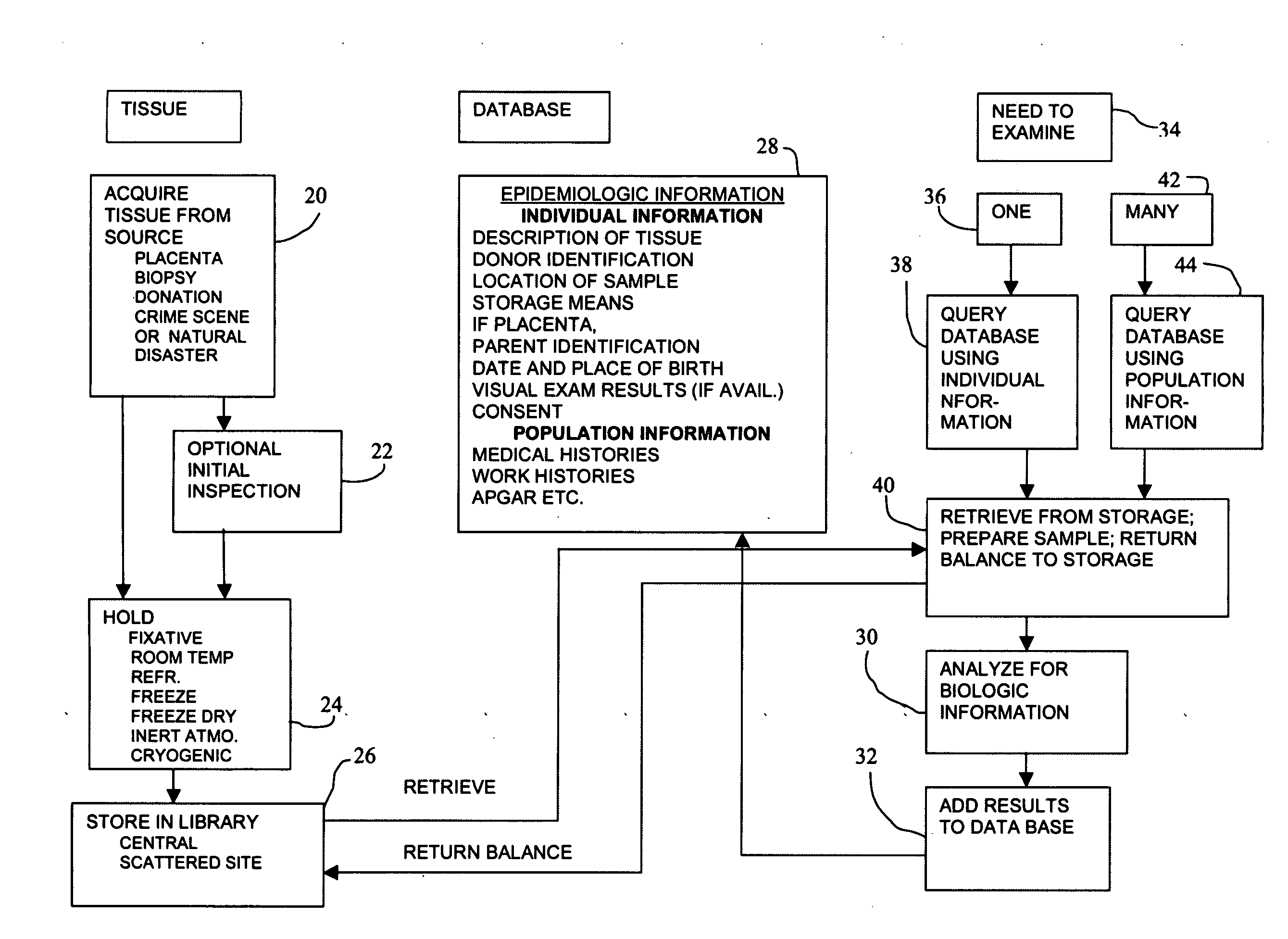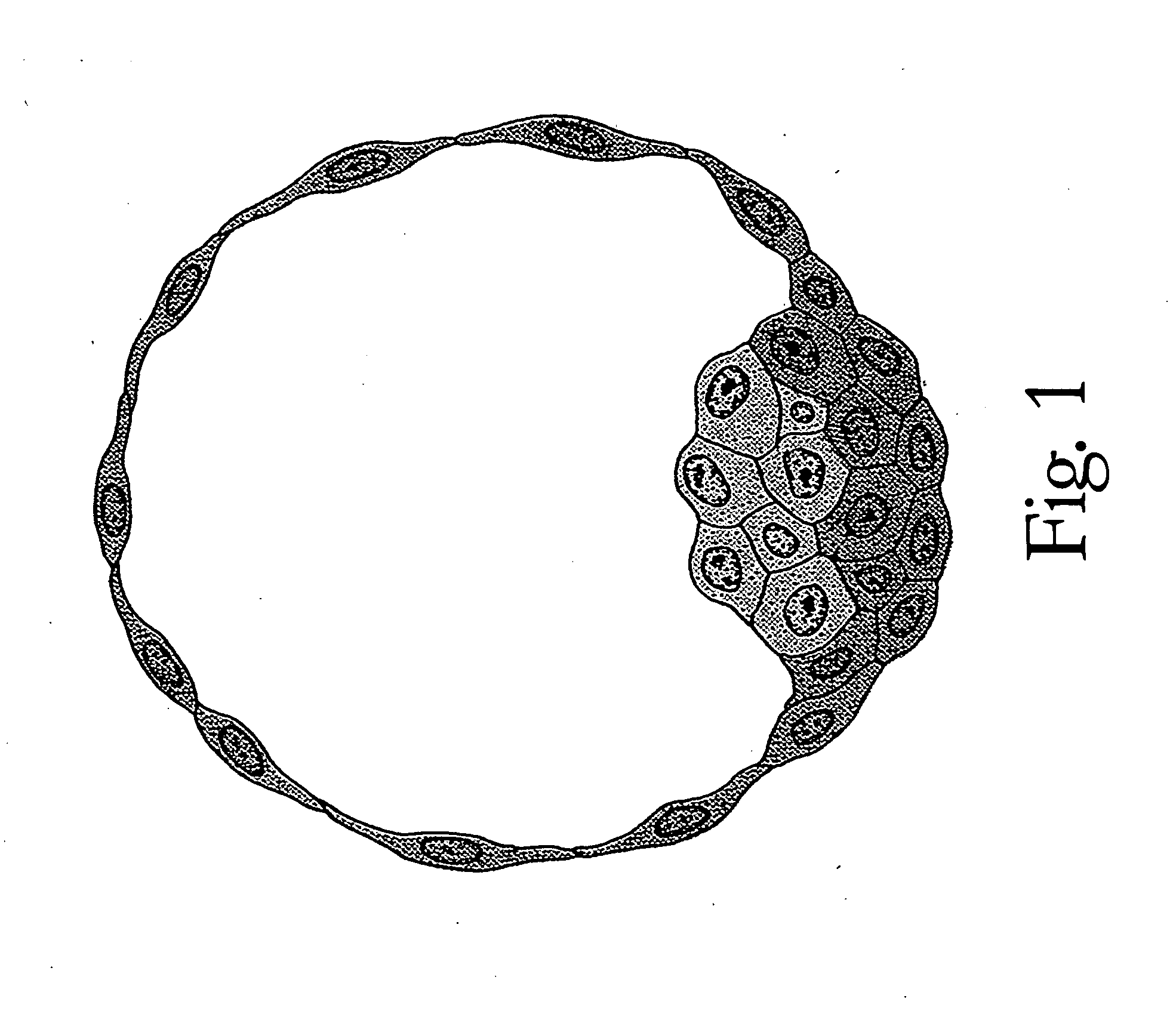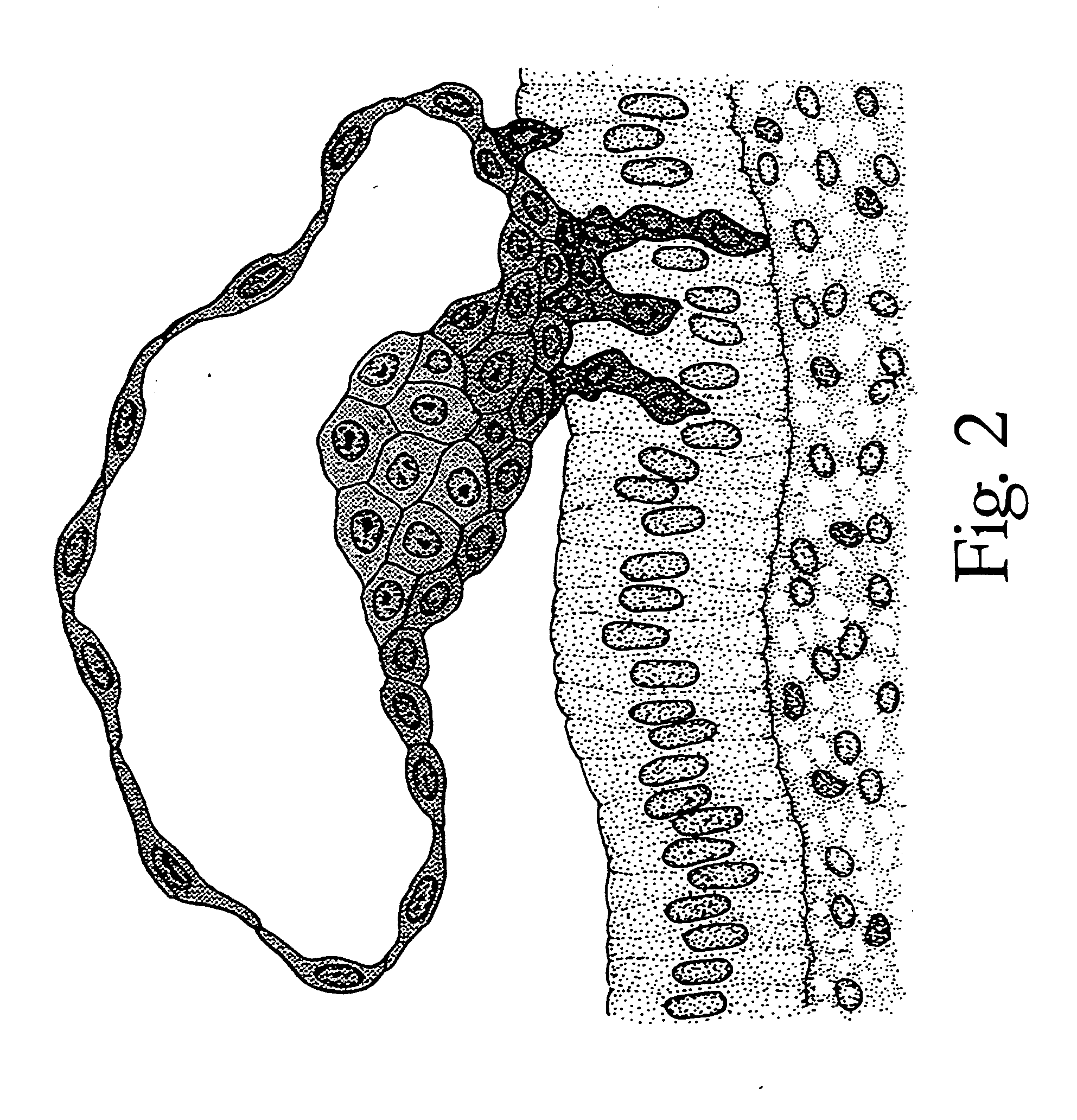Method of making and using a library of biological information
a technology of biological information and library, applied in medical science, surgery, vaccination/ovulation diagnostics, etc., can solve problems such as complication or neonatal abnormality, physician and family may lose the opportunity to prevent a recurrence of the same complication, and achieve the effect of low initial cos
- Summary
- Abstract
- Description
- Claims
- Application Information
AI Technical Summary
Benefits of technology
Problems solved by technology
Method used
Image
Examples
Embodiment Construction
[0135]Viewing each placenta not as an isolated tissue sample but as a sample from a larger set of samples, a library of placental tissue is created. The library's “collection” grows by saving the placenta or a sample from the placenta of most, if not all, births. The library of placental tissue of a population may then be used for subsequent research and / or diagnosis. In addition to examination focused on learning information about a single individual, the library may also prove useful for epidemiologic or other research purposes. For example, such a library might reveal information concerning so-called “toxic torts,” drug use and effectiveness, and other information derivable from a survey of a large collection of tissue samples. These uses of the library are exemplary; other uses are as unpredictable and numerous as the reasons readers withdraw books from libraries.
[0136]The first step to creating a tissue library is to acquire tissue. This step is illustrated schematically at 20 ...
PUM
 Login to View More
Login to View More Abstract
Description
Claims
Application Information
 Login to View More
Login to View More - R&D
- Intellectual Property
- Life Sciences
- Materials
- Tech Scout
- Unparalleled Data Quality
- Higher Quality Content
- 60% Fewer Hallucinations
Browse by: Latest US Patents, China's latest patents, Technical Efficacy Thesaurus, Application Domain, Technology Topic, Popular Technical Reports.
© 2025 PatSnap. All rights reserved.Legal|Privacy policy|Modern Slavery Act Transparency Statement|Sitemap|About US| Contact US: help@patsnap.com



